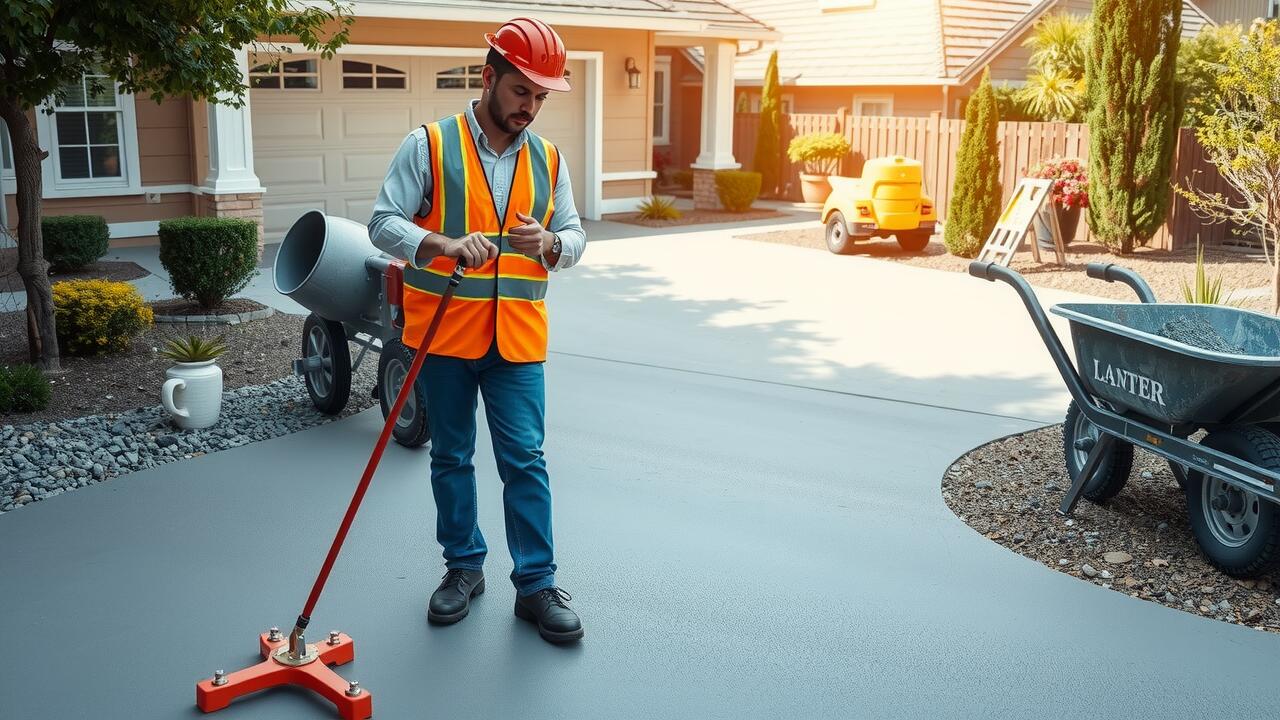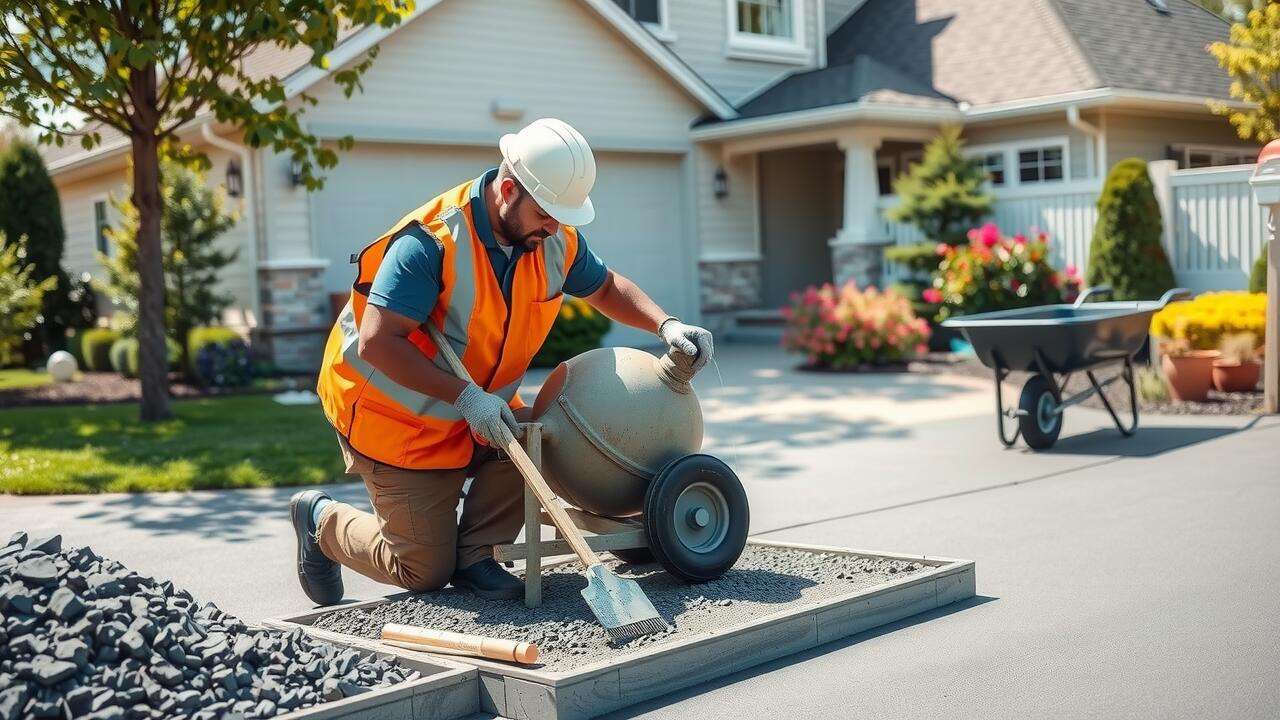
DIY Driveway Installation
Many homeowners consider DIY driveway installation as a way to save money on labor costs. By procuring materials like asphalt, concrete, or gravel and handling the project personally, individuals can reduce expenses significantly. Online resources and local hardware stores offer guidance and tools needed for the task. This hands-on approach often results in a strong sense of accomplishment, as well as the flexibility to customize the driveway according to personal preferences.
However, tackling driveway installation without professional help comes with its set of challenges. Proper preparation and understanding of the materials are crucial for a durable finish. Inexperience may lead to issues such as improper grading or drainage problems, which can have long-term consequences. Additionally, homeowners need to factor in the time commitment involved, as completing the project may take longer than expected, especially without prior experience.
Cost-Effectiveness and Challenges
When considering driveway installation, homeowners often weigh the cost-effectiveness of a DIY approach against hiring professionals. A DIY project can save money on labor costs, but it requires substantial time, effort, and skill. The materials purchased for a DIY installation can vary dramatically in price, with options ranging from gravel to asphalt to concrete. While the initial expense may be lower with a DIY project, hidden costs related to tools, potential mistakes, and the need for future repairs can add up quickly.
Challenges also arise when opting for a DIY installation. Without proper experience, individuals may face difficulties in ensuring the driveway’s slope and drainage are correct, leading to long-term problems such as water pooling or cracking. Additionally, some localities have regulations regarding driveway installation that necessitate permits or adherence to specific standards. These factors can complicate the process for those attempting to cut costs while ensuring their project adheres to local guidelines.
Regional Pricing Variations
Regional variations in pricing can significantly impact the overall cost of driveway installation. In areas where materials are readily available and labor costs are competitive, homeowners may find lower prices for both asphalt and concrete options. Conversely, locations with scarce resources or a high demand for skilled labor often incur higher expenses. For instance, urban centers may experience increased pricing due to elevated market demand and limited space for installation, whereas rural areas may have more affordable rates.
Local regulations and climate conditions also contribute to differences in pricing. Regions prone to severe weather might require thicker or more durable materials, increasing installation costs. Additionally, local building codes can dictate specific materials or installation methods, affecting the overall budget. Understanding these regional nuances helps homeowners better anticipate the financial commitment associated with driveway installation.
How Location Affects Driveway Costs
Factors influencing driveway installation costs often vary significantly between urban and rural areas. Urban locations typically encounter higher labor rates and material costs due to increased demand and limited space. In contrast, rural areas might offer more affordable installation options, but availability of skilled labor and quality materials can become a challenge, affecting the overall pricing.
Additionally, the cost of driveway installation can change dramatically by region. Regions with harsh climates may require different materials and techniques, leading to higher prices. In areas where local regulations impose additional requirements such as permits or specific drainage solutions, homeowners might face extra expenses, contributing to the overall cost of the project.
Seasonal Considerations
Seasonal factors can significantly influence the cost and ease of driveway installation. Spring and early summer are often considered peak seasons for many homeowners to undertake this project. During these months, contractors are more readily available, and the weather conditions are generally favorable, allowing for smoother installations. However, the increased demand can lead to higher prices for labor and materials.
Conversely, late fall and winter might present opportunities for cost savings on driveway installation. Many contractors are willing to negotiate prices during the off-peak season due to a decrease in project demand. Weather can pose challenges during colder months, yet the potential for reduced costs might make it appealing for those willing to take the risk. Homeowners should carefully evaluate the trade-offs of timing to maximize their investment.
Best Times of Year for Installation Savings
Timing plays a crucial role in the overall cost of driveway installation. Many homeowners find that scheduling their projects during the late fall or early spring can lead to significant savings. Contractors tend to have more flexible schedules during these off-peak seasons, often resulting in lower labor costs and better negotiation opportunities. Additionally, materials may be more affordable when demand is reduced.
Another consideration is local climate conditions. In regions with harsh winters, driveway installation may be limited during icy months, driving prices up when the season turns favorable. Conversely, the summer months frequently see increased demand, which can inflate costs due to the overwhelming number of projects booked. Planning driveway installation during quieter times in the year can be beneficial for both budget and scheduling flexibility.
FAQS
What factors influence the cost of installing a driveway?
The cost of installing a driveway can be influenced by several factors, including the material chosen (asphalt, concrete, gravel, etc.), the size and design of the driveway, labor costs in your area, and any necessary permits or preparations, such as excavation or grading.
Is it cheaper to install a driveway myself?
DIY driveway installation can be more cost-effective if you have the necessary skills and tools. However, it’s important to consider the challenges involved and potential mistakes that could lead to additional expenses. If you’re not experienced, hiring a professional may save you money in the long run.
How does location affect the cost of driveway installation?
Regional pricing variations can significantly impact the cost of driveway installation. Areas with a higher cost of living often see increased labor and material costs. Additionally, local regulations and climate conditions can affect pricing, making it crucial to research costs specific to your location.
When is the best time to install a driveway for potential savings?
The best times of year for driveway installation often fall during the shoulder seasons, typically in spring or fall. During these times, demand may be lower, potentially leading to discounts or better rates from contractors.
Are there any hidden costs associated with driveway installation?
Yes, hidden costs can arise during driveway installation, including site preparation (like grading and drainage), permits, and any necessary repairs to existing structures. It’s important to factor in these potential expenses when budgeting for your driveway project.
